Information Disclosure on Hazards from Industrial Water Pollution Incidents: Latent Resistance and Countermeasures in China
Abstract
:1. Introduction
2. Review on Representative Journal Literature about EID
3. Theoretical Review
4. Materials and Methods
5. Results
6. Discussion
7. Conclusions
- Investigation of information disclosure related decisions embedded in an institutional framework. Understanding the mechanism of how institutional arrangements shaping decisions on information disclosure will contribute to discovering potential ways to rectify institutional deviation and avoid administrative fraud.
- Development of convenient information disclosure platforms for public environmental participation. There are more than one billion mobile devices in China, offering huge potential for citizen to use mobile apps to collect and monitor environmental data [95], promising to realize efficient environmental surveillance and transparent environmental information in an era of big data. This way can contribute to reducing the risk of information disclosure fraud.
- Designing socially and environmentally responsible value chains and incentive compatibility mechanisms to promote extensive corporate eco-innovation, so as to fundamentally reduce pollution.
Author Contributions
Acknowledgments
Conflicts of Interest
References
- Miao, X.; Tang, Y.; Wong, C.W.Y.; Zang, H. The latent causal chain of industrial water pollution in China. Environ. Pollut. 2015, 196, 473–477. [Google Scholar] [CrossRef] [PubMed]
- Wang, Q.; Yang, Z.M. Industrial water pollution, water environment treatment, and health risks in China. Environ. Pollut. 2016, 218, 358–365. [Google Scholar] [CrossRef] [PubMed]
- Yao, H.; You, Z.; Liu, B. Economic estimation of the losses caused by surface water pollution accidents in China from the perspective of water bodies’ functions. Int. J. Environ. Res. Public Health 2016, 13, 154. [Google Scholar] [CrossRef] [PubMed]
- Dahlander, L.; Gann, D.M. How open is innovation? Res. Policy 2010, 39, 699–709. [Google Scholar] [CrossRef]
- He, F.; Miao, X.; Wong, C.Y.W.; Lee, S. Contemporary corporate eco-innovation research: A systematic review. J. Clean. Prod. 2018, 174, 502–526. [Google Scholar] [CrossRef]
- Fifka, M.S. Corporate responsibility reporting and its determinants in comparative perspective—A review of the empirical literature and a meta-analysis. Bus. Strategy Environ. 2013, 22, 1–35. [Google Scholar] [CrossRef]
- Meng, X.H.; Zeng, S.X.; Tam, C.M.; Xu, X.D. Whether top executives’ turnover influences environmental responsibility: From the perspective of environmental information disclosure. J. Bus. Ethics 2013, 114, 341–353. [Google Scholar] [CrossRef]
- Weber, O. Corporate sustainability and financial performance of Chinese banks. Sustain. Account. Manag. Policy J. 2017, 8, 358–385. [Google Scholar] [CrossRef]
- Chen, H.; Zeng, S.; Lin, H.; Ma, H.Y. Munificence, dynamism, and complexity: How industry context drives corporate sustainability. Bus. Strategy Environ. 2017, 26, 125–141. [Google Scholar] [CrossRef]
- Zhang, C. Political connections and corporate environmental responsibility: Adopting or escaping? Energy Econ. 2017, 68, 539–547. [Google Scholar] [CrossRef]
- Li, D.; Cao, C.; Zhang, L.; Chen, X.H.; Ren, S.G.; Zhao, Y.N. Effects of corporate environmental responsibility on financial performance: The moderating role of government regulation and organizational slack. J. Clean. Prod. 2017, 166, 1323–1334. [Google Scholar] [CrossRef]
- Zeng, S.X.; Xu, X.D.; Dong, Z.Y.; Tam, V.W.Y. Towards corporate environmental information disclosure: An empirical study in China. J. Clean. Prod. 2010, 18, 1142–1148. [Google Scholar] [CrossRef]
- Holm, C.; Rikhardsson, P. Experienced and novice investors: Does environmental information influence investment allocation decisions? Eur. Account. Rev. 2008, 17, 537–557. [Google Scholar] [CrossRef]
- Liu, X.; Wang, C.; Shishime, T.; Fujitsuka, T. Environmental activisms of firm’s neighboring residents: An empirical study in China. J. Clean. Prod. 2010, 18, 1001–1008. [Google Scholar] [CrossRef]
- Lyon, T.P.; Shimshack, J.P. Environmental disclosure: Evidence from newsweek’s green companies rankings. Bus. Soc. 2015, 54, 632–675. [Google Scholar] [CrossRef]
- Huang, R.; Chen, D. Does environmental information disclosure benefit waste discharge reduction? Evidence from China. J. Bus. Ethics 2015, 129, 535–552. [Google Scholar] [CrossRef]
- Wang, X. Requests for environmental information disclosure in China: An understanding from legal mobilization and citizen activism. J. Contemp. China 2016, 25, 233–247. [Google Scholar] [CrossRef]
- Hassan, A.; Ibrahim, E. Corporate environmental information disclosure: Factors influencing companies’ success in attaining environmental awards. Corp. Soc. Responsib. Environ. Manag. 2012, 19, 32–46. [Google Scholar] [CrossRef]
- Li, D.; Zhao, Y.; Sun, Y.; Yin, D.J.Y. Corporate environmental performance, environmental information disclosure, and financial performance: Evidence from China. Hum. Ecol. Risk Assess. 2017, 23, 323–339. [Google Scholar] [CrossRef]
- Istrate, C.; Robu, I.B.; Pavaloaia, L.; Herghiligiu, I.V. Analysis of companies sustainability under the influence of environmental information disclosure. Environ. Eng. Manag. J. 2017, 16, 957–967. [Google Scholar]
- Kasim, M.T. Evaluating the effectiveness of an environmental disclosure policy: An application to New South Wales. Resource Energy Econ. 2017, 49, 113–131. [Google Scholar] [CrossRef]
- Yu, Y.; Huang, J.; Luo, N. Can more environmental information disclosure lead to higher eco-efficiency? Evidence from China. Sustainability 2018, 10, 528. [Google Scholar]
- Zhang, L.; Mol, A.P.J.; He, G.; Lu, Y.L. An implementation assessment of China’s environmental information disclosure decree. J. Environ. Sci.-China 2010, 22, 1649–1656. [Google Scholar] [CrossRef]
- Zhao, Y. Public participation in China’s EIA regime: Rhetoric or reality? J. Environ. Law 2010, 22, 89–123. [Google Scholar] [CrossRef]
- Song, X.; Mulder, K.; Frostell, B.; Ravesteijn, W.; Wennersten, R. Transition in public participation in Chinese water management. Proc. Inst. Civil Eng.-Eng. Sustain. 2011, 164, 71–83. [Google Scholar] [CrossRef]
- Johnson, T. Environmental information disclosure in China: Policy developments and NGO responses. Policy Polit. 2011, 39, 399–416. [Google Scholar] [CrossRef]
- He, G.; Mol, A.P.J.; Zhang, L.; Lu, Y.L. Public participation and trust in nuclear power development in China. Renew. Sustain. Energy Rev. 2013, 23, 1–11. [Google Scholar] [CrossRef]
- Huang, T.; Yue, Q. A borrowed cloak: The institutional bottlenecks to legislating environmental information disclosure by Chinese listed corporations. J. Environ. Law 2017, 29, 445–473. [Google Scholar] [CrossRef]
- Cho, C.H.; Freedman, M.; Patten, D.M. Corporate disclosure of environmental capital expenditures a test of alternative theories. Account. Audit. Account. J. 2012, 25, 486–507. [Google Scholar] [CrossRef]
- Zeng, S.X.; Xu, X.D.; Yin, H.T.; Tam, C.M. Factors that drive Chinese listed companies in voluntary disclosure of environmental information. J. Bus. Ethics 2012, 109, 309–321. [Google Scholar] [CrossRef]
- Kuo, L.; Yeh, C.C.; Yu, H.C. Disclosure of corporate social responsibility and environmental management: Evidence from China. Corp. Soc. Responsib. Environ. Manag. 2012, 19, 273–287. [Google Scholar] [CrossRef]
- Meng, X.H.; Zeng, S.X.; Tam, C.M. From voluntarism to regulation: A study on ownership, economic performance and corporate environmental information disclosure in China. J. Bus. Ethics 2013, 116, 217–232. [Google Scholar] [CrossRef]
- Doshi, A.R.; Dowell, G.W.S.; Toffel, M.W. How firms respond to mandatory information disclosure. Strateg. Manag. J. 2013, 34, 1209–1231. [Google Scholar] [CrossRef]
- Lewis, B.W.; Walls, J.L.; Dowell, G.W.S. Difference in degrees: CEO characteristics and firm environmental disclosure. Strateg. Manag. J. 2014, 35, 712–722. [Google Scholar] [CrossRef]
- Meng, X.H.; Zeng, S.X.; Leung, A.W.T.; Tam, C.M. Relationship between top executives’ characteristics and corporate environmental responsibility: Evidence from China. Hum. Ecol. Risk Assess. 2015, 21, 466–491. [Google Scholar] [CrossRef]
- Li, D.; Xin, L.; Sun, Y.; Huang, M.; Ren, S.G. Assessing Environmental Information Disclosures and the Effects of Chinese Nonferrous Metal Companies. Polish J. Environ. Stud. 2016, 25, 663–671. [Google Scholar] [CrossRef]
- Tian, X.L.; Guo, Q.G.; Han, C.; Ahmad, N. Different extent of environmental information disclosure across Chinese cities: Contributing factors and correlation with local pollution. Glob. Environ. Chang.-Hum. Policy Dimens. 2016, 39, 244–257. [Google Scholar] [CrossRef]
- Yao, S.; Liang, H. Firm location, political geography and environmental information disclosure. Appl. Econ. 2017, 49, 251–262. [Google Scholar] [CrossRef]
- Cheng, Z.; Wang, F.; Keung, C.; Bai, Y.X. Will corporate political connection influence the environmental information disclosure level? Based on the panel data of A-Shares from listed companies in Shanghai stock market. J. Bus. Ethics 2017, 143, 209–221. [Google Scholar] [CrossRef]
- Yao, S.; Yang, J. Geographical distance and environmental information disclosure: The perspective of public pressure transmission efficiency. Asia-Pac. J. Financ. Stud. 2017, 46, 445–462. [Google Scholar] [CrossRef]
- Liu, X.; Anbumozhi, V. Determinant factors of corporate environmental information disclosure: An empirical study of Chinese listed companies. J. Clean. Prod. 2009, 17, 593–600. [Google Scholar] [CrossRef]
- Kuo, L.; Yu, H.C.; Chang, B.G. The signals of green governance on mitigation of climate change—Evidence from Chinese firms. Int. J. Clim. Chang. Strateg. Manag. 2015, 7, 154–171. [Google Scholar] [CrossRef]
- Noronha, C.; Leung, T.C.H.; Lei, O.I. Corporate social responsibility disclosure in Chinese railway companies corporate response after a major train accident. Sustain. Account. Manag. Policy J. 2015, 6, 446–474. [Google Scholar] [CrossRef]
- Riley, T.; Huiya, C. Unmasking Chinese business enterprises: Using information disclosure laws to enhance public participation in corporate environmental decision making. Harv. Environ. Law Rev. 2009, 33, 177–224. [Google Scholar]
- Li, W. Self-motivated versus forced disclosure of environmental information in China: A comparative case study of the pilot disclosure programmes. China Quart. 2011, 206, 331–351. [Google Scholar] [CrossRef]
- Rodrigue, M. Contrasting realities: Corporate environmental disclosure and stakeholder-released information. Account. Audit. Account. 2014, 27, 119–149. [Google Scholar] [CrossRef]
- Huang, C.L.; Kung, F.H. Drivers of environmental disclosure and stakeholder expectation: Evidence from Taiwan. J. Bus. Ethics 2010, 96, 435–451. [Google Scholar] [CrossRef]
- Albrecht, W.S.; Albrecht, C.C.; Albrecht, C.O. Fraud and corporate executives: Agency, stewardship and broken trust. J. Forensic Account. 2004, 5, 109–130. [Google Scholar]
- Berman, S.L.; Wicks, A.C.; Kotha, S.; Jones, T.M. Does stakeholder orientation matter? The relationship between stakeholder management models and firm financial performance. Acad. Manag. J. 1999, 42, 488–506. [Google Scholar]
- Jensen, M.C. Value maximization, stakeholder theory, and the corporate objective function. Bus. Ethics Quart. 2002, 12, 235–256. [Google Scholar] [CrossRef]
- Rodgers, W.; Soderbom, A.; Guiral, A. Corporate social responsibility enhanced control systems reducing the likelihood of fraud. J. Bus. Ethics 2015, 131, 871–882. [Google Scholar] [CrossRef]
- Freeman, E. Strategic Management: A Stakeholder Approach; Cambridge University Press: Cambridge, UK, 2010. [Google Scholar]
- Murphy, P.R.; Dacin, M.T. Psychological pathways to fraud: Understanding and preventing fraud in organizations. J. Bus. Ethics 2011, 101, 601–618. [Google Scholar] [CrossRef]
- Ruf, B.M.; Muralidhar, K.; Brown, R.M.; Janney, J.J.; Paul, K. An empirical investigation of the relationship between change in corporate social performance and financial performance: A stakeholder theory perspective. J. Bus. Ethics 2001, 32, 143–156. [Google Scholar] [CrossRef]
- Chen, J.D.; Cumming, D.; Hou, W.X.; Lee, E. Does the external monitoring effect of financial analysts deter corporate fraud in China? J. Bus. Ethics 2016, 134, 727–742. [Google Scholar] [CrossRef]
- Schuchter, A.; Levi, M. The fraud triangle revisited. Sec. J. 2016, 29, 107–121. [Google Scholar] [CrossRef]
- Blattberg, C. “Welfare: Towards the Patriotic Corporation”. From Pluralist to Patriotic Politics: Putting Practice First; Oxford University Press: New York, NY, USA, 2004; pp. 172–184. [Google Scholar]
- Liu, X.K.; Wright, A.M.; Wu, Y.J. Managers’ unethical fraudulent financial reporting: The effect of control strength and control framing. J. Bus. Ethic 2015, 129, 295–310. [Google Scholar] [CrossRef]
- Mitchell, R.K.; Agle, B.R.; Wood, D.J. Toward a theory of stakeholder identification and salience: Defining the principle of who and what really counts. Acad. Manag. Rev. 1997, 22, 853–886. [Google Scholar] [CrossRef]
- Donaldson, T.; Preston, L.E. The stakeholder theory of the corporation: Concepts, evidence, and implications. Acad. Manag. Rev. 1995, 20, 65–91. [Google Scholar] [CrossRef]
- Mansell, S. Capitalism, Corporations and the Social Contract: A Critique of Stakeholder Theory; Cambridge University Press: Cambridge, UK, 2013. [Google Scholar]
- Houdek, P. Professional identity and dishonest behavior. Society 2017, 54, 253–260. [Google Scholar] [CrossRef]
- Tangpong, C. Content analytic approach to measuring constructs in operations and supply chain management. J. Oper. Manag. 2011, 29, 627–638. [Google Scholar] [CrossRef]
- Wong, C.W.Y.; Miao, X.; Cui, S.; Tang, Y. Impact of corporate environmental responsibility on operating income: Moderating role of regional disparities in China. J. Bus. Ethics 2106, 1–20. [Google Scholar] [CrossRef]
- Xinhua News Agency. 2004. Available online: http://news.xinhuanet.com/newscenter/2004-04/05/content_1402136.htm (accessed on 10 April 2015).
- Tang, J.G.; Wang, G.; Li, Y. They made up a reason. China Newsweek 2005, 11, 20–23. [Google Scholar]
- Xinhua News Agency. 2005. Available online: http://news.xinhuanet.com/politics/2005-11/28/content_3848242.htm (accessed on 12 April 2015).
- China News Net. 2006. Available online: http://www.chinanews.com/news/2006/2006-01-07/8/675054.shtml (accessed on 21 April 2015).
- China Economy Net. 2006. Available online: http://www.ce.cn/xwzx/gnsz/gdxw/200609/18/t20060918_8601465.shtml (accessed on 10 April 2015).
- China Youth Daily. 2007. Available online: http://zqb.cyol.com/content/2007-06/01/content_1779766.htm (accessed on 13 April 2015).
- Xinhua News Agency. 2008. Available online: http://news.xinhuanet.com/newscenter/2008-10/27/content_10257061_1.htm (accessed on 30 March 2015).
- Green Living. 2013. Available online: http://www.hjysh.cn/_d276116044.htm (accessed on 15 April 2015).
- People’s Net. 2009. Available online: http://politics.people.com.cn/GB/14562/10061888.html (accessed on 25 March 2015).
- Southern Weekly. 2010. Available online: http://www.infzm.com/content/47527 (accessed on 29 March 2015).
- Xinhua News Agency. 2010. Available online: http://news.xinhuanet.com/2010-10/08/c_12636854.htm (accessed on 16 April 2015).
- Securities Times. 2011. Available online: http://epaper.stcn.com/paper/zqsb/html/2011-12/29/content_331083.htm (accessed on 5 April 2015).
- Evening News. 2013. Available online: http://newspaper.jfdaily.com/xwwb/html/2013-02/25/content_978062.htm (accessed on 15 April 2015).
- Xinjiang Metropolis Daily. 2012. Available online: http://epaper.ts.cn/ftp/site1/xjdsb/html/2012-01/31/content_158190.htm (accessed on 16 April 2015).
- JCRB. 2012. Available online: http://www.jcrb.com/zhuanti/shzt/gxgwr/ (accessed on 18 April 2015).
- Legal Daily. 2013. Available online: http://www.legaldaily.com.cn/The_analysis_of_public_opinion/content/2013-02/06/content_4183953.htm (accessed on 22 April 2015).
- Fawan News. Available online: http://www.fawan.com/Article/gn/jd/2013/02/14/125838186587.html (accessed on 2 April 2017).
- Tang, Y.; Wu, S.; Miao, X.; Pollard, S.J.T.; Hrudey, S.E. Resilience to evolving drinking water contamination risks: A human error prevention perspective. J. Clean. Prod. 2013, 57, 228–237. [Google Scholar] [CrossRef]
- Ministry of Environmental Protection of China. Available online: http://www.gov.cn/zhengce/2015-07/22/content_2900767.htm (accessed on 6 August 2017).
- Zhang, B.; Cao, C. Four gaps in China’s new environmental law. Nature 2015, 517, 433–434. [Google Scholar] [CrossRef] [PubMed]
- Xinhua News Agency. Available online: http://news.xinhuanet.com/fortune/2015-10/29/c_1116983078.htm (accessed on 18 September 2017).
- Tang, Y.; Ma, Y.; Wong, C.W.Y.; Miao, X. Evolution of government policies on guiding corporate social responsibility in China. Sustainability 2018, 10, 741. [Google Scholar] [CrossRef]
- Yang, H.; Huang, X.J.; Thompson, J.R.; Flower, R.J. Enforcement key to China’s environment. Science 2015, 347, 834–835. [Google Scholar] [CrossRef] [PubMed]
- Miao, X.; Tang, Y.; Wong, C.W.Y. Polluters migrate to China’s poor areas. Nature 2015, 518, 483. [Google Scholar] [CrossRef] [PubMed]
- Miao, X. China emissions: Stop subsidizing emitters. Nature 2015, 527, 38. [Google Scholar] [CrossRef] [PubMed]
- Zhang, H.M.; Xiong, L.F.; Qiu, Y.M.; Zhou, D.Q. How have political incentives for local officials reduced environmental pollution in resource-depleted cities? Sustainability 2017, 9, 1941. [Google Scholar] [CrossRef]
- Dongguan Sunshine Net. Available online: http://news.sun0769.com/town/ms/201505/t20150516_5367400.shtml (accessed on 8 September 2017).
- Zhang, T.; Zheng, F.; Yu, T. Citizens arrest river pollution in China. Nature 2016, 535, 231. [Google Scholar] [CrossRef] [PubMed]
- China News Net. Available online: http://www.chinanews.com/gn/2017/11-25/8385173.shtml (accessed on 25 November 2017).
- Lee, H.L.; Tang, C.S. Socially and environmentally responsible value chain innovations: New operations management research opportunities. Manag. Sci. 2018, 64, 983–996. [Google Scholar] [CrossRef]
- Zhang, J.; Huang, X. China needs more monitoring apps. Nature 2015, 520, 436. [Google Scholar] [CrossRef] [PubMed]
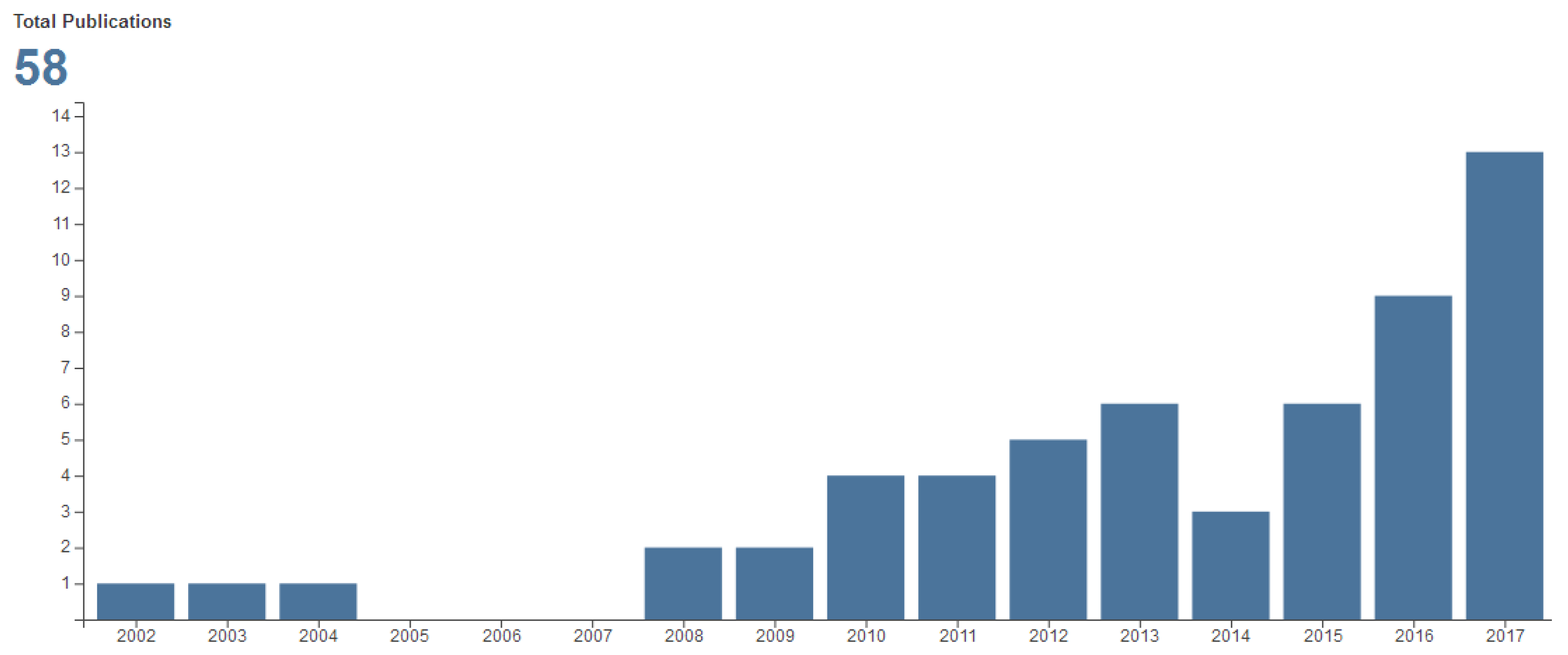
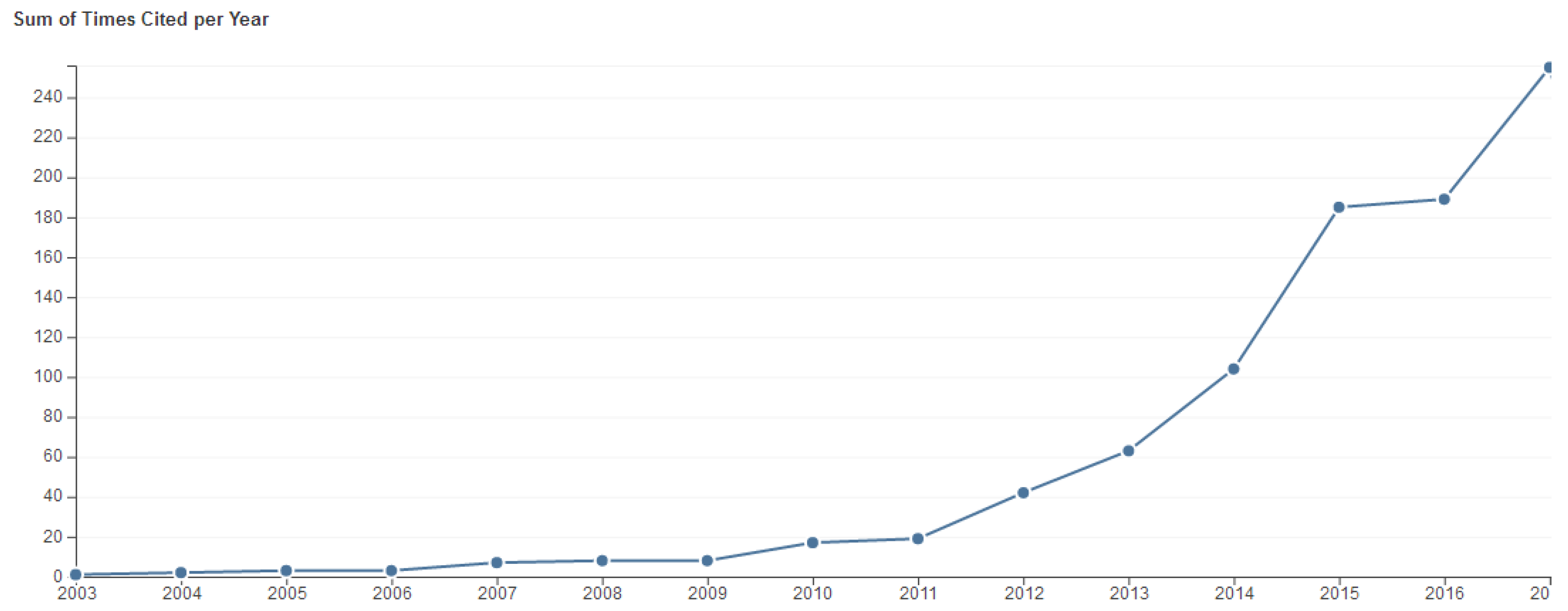
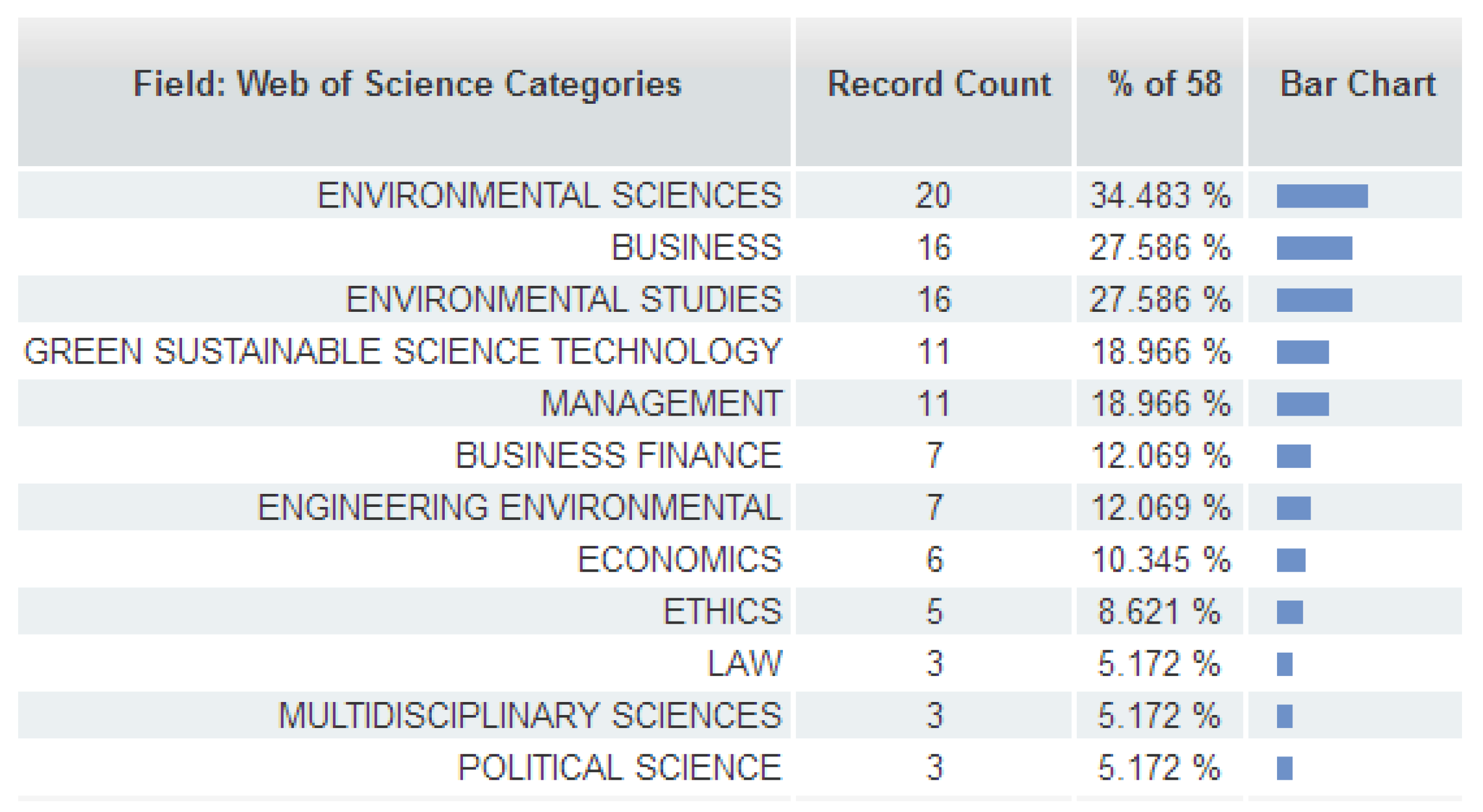
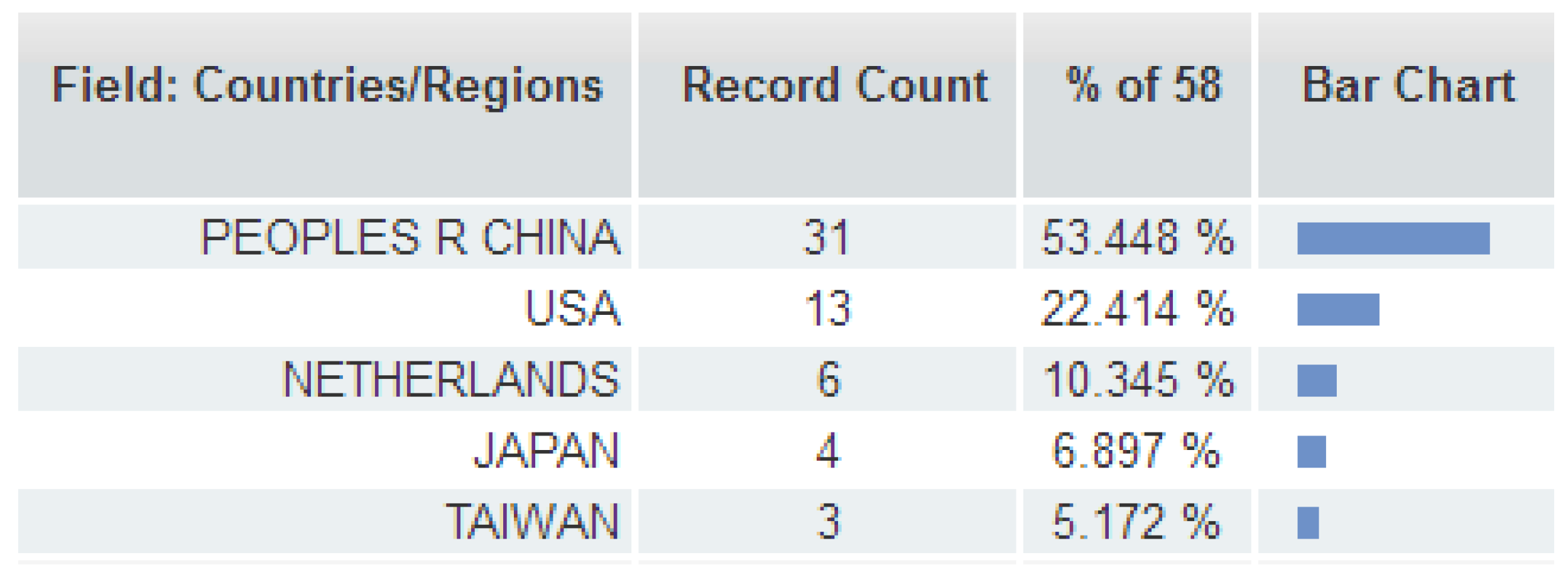



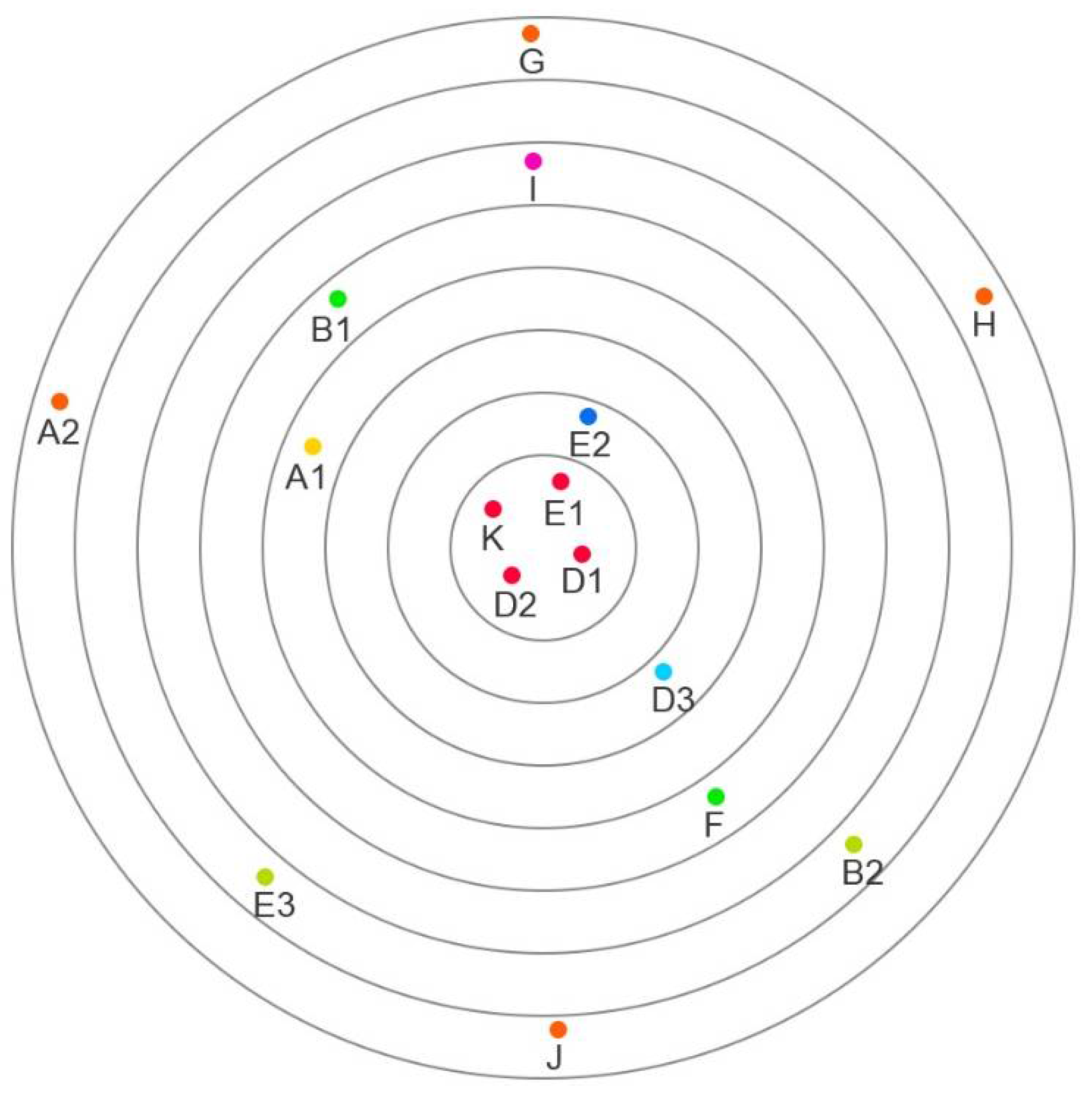
| Authors | Publication Years | Journal Names | Times Cited (from Web of Science Core Collection) |
|---|---|---|---|
| Liu and Anbumozhi | 2009 | Journal of Cleaner Production | 135 |
| Fifka | 2013 | Business Strategy and The Environment | 107 |
| Zeng et al. | 2012 | Journal of Business Ethics | 73 |
| Stephan | 2002 | Social Science Quarterly | 58 |
| Zeng et al. | 2010 | Journal of Cleaner Production | 56 |
| Cho et al. | 2012 | Accounting Auditing & Accountability Journal | 48 |
| Hassan and Ibrahim | 2012 | Corporate Social Responsibility and Environmental Management | 36 |
| He et al. | 2013 | Renewable & Sustainable Energy Reviews | 32 |
| Kuo et al. | 2012 | Corporate Social Responsibility and Environmental Management | 32 |
| Lewis et al. | 2014 | Strategic Management Journal | 31 |
| Aspects | Stakeholder Theory | Fraud Triangle Theory |
|---|---|---|
| legitimacy | normal | illegal |
| level | strategy | tactic |
| time span | long-term | short-term |
| information | open and share | monopoly and blockade |
| interest | compromised or balanced | maximization of self-interest |
| alleviating conflict | dialogue and negotiation | self-rationalization |
| social contract | based on and support | violate and betray |
| No. | Incident Name, Province and Outbreak Date | Information Disclosure Delay | Consequence |
|---|---|---|---|
| 1 | Tuojiang River pollution in Sichuan (16 February 2004) | Information disclosure was delayed 20 days [65]. | Millions of people living along the river suffered suspension of water supplies; direct economic loss was more than a hundred million renminbi [65]. |
| 2 | Songhua River pollution occurred in Jilin (20 November 2005) | The truth was concealed 9 days [66]. | Water supply of the downstream Harbin city had been shut for four days, and the city once fell into panic [67]. The subsequent contamination removing plan cost 26.6 billion renminbi [68]. |
| 3 | Yueyang arsenic pollution in Hunan (6 September 2006) | Information disclosure was delayed 2 days [69]. | The lives of 100,000 residents were under threat [69]. |
| 4 | Taihu Lake cyanobacterial bloom occurred in Jiangshu (25 April 2007) | Information disclosure was delayed 3 days [70]. | Two million residents in Wuxi suffered tap water deterioration and drinking water shortages [23]. Some schools and colleges suspended classes; the price of bottled water sky-rocketed; panic occured mond the public [70]. |
| 5 | Yangzonghai Lake arsenic contamination occurred in Yunnan (19 September 2008) | Information disclosure was Information disclosure was delayed about one month [71]. | In order to improve water quality, an investment plan reached 1.14 billion renminbi; experts predicted the cost would reach 4 to 7 billion renminbi to thoroughly remedy the water quality of Yangzonghai Lake [72]. |
| 6 | Chifeng water pollution occurred in Inner Mongolia (23 July 2009) | Information disclosure was delayed 3 days [73]. | More than 4000 residents fell ill and were hospitalized [73]. |
| 7 | Zijin Mining Corporation pollution in Fujian (3 July 2010) | The fact was concealed 9 days [74]. | Direct economic losses amounted to 31.877 million renminbi [75]. |
| 8 | Jiangxi Copper Corporation wastewater pollution in Jiangxi (7 December 2011) | The fact about water pollution had been concealed for many years [76]. | Over 420,000 residents downstream suffered health risks and 71 residents in the Dai village died from cancers related to the pollution [77]. |
| 9 | Longjiang River cadmium contamination in Guangdong (15 January 2012) | Information disclosure was delayed 10 days [78]. | Many fishermen and more than 3 million residents were affected. 1.33 million baby fish and 40,000 kg of adult fish died [79]. |
| 10 | Changzhi aniline leakage in Shanxi (31 December 2012) | Information disclosure was delayed 5 days [80]. | Millions of residents in provinces Shanxi, Henan and Heibei suffered water crisis [80]. |
| Symbols | Actor Types |
|---|---|
| A1 | Polluter |
| A2 | Polluter related firms |
| B1 | Local community |
| B2 | Downstream community |
| D1 | Local provincial government |
| D2 | Local municipal government or local frontline government |
| D3 | Downstream government |
| E1 | Local provincial environmental protection department |
| E2 | Local municipal environmental protection bureau or local frontline environmental protection agency |
| E3 | Downstream environmental protection agency |
| F | Public |
| G | NGOs |
| H | Insiders |
| I | Experts or scholars |
| J | Water supply plants |
| K | News media |
© 2018 by the authors. Licensee MDPI, Basel, Switzerland. This article is an open access article distributed under the terms and conditions of the Creative Commons Attribution (CC BY) license (http://creativecommons.org/licenses/by/4.0/).
Share and Cite
Tang, Y.; Miao, X.; Zang, H.; Gao, Y. Information Disclosure on Hazards from Industrial Water Pollution Incidents: Latent Resistance and Countermeasures in China. Sustainability 2018, 10, 1475. https://doi.org/10.3390/su10051475
Tang Y, Miao X, Zang H, Gao Y. Information Disclosure on Hazards from Industrial Water Pollution Incidents: Latent Resistance and Countermeasures in China. Sustainability. 2018; 10(5):1475. https://doi.org/10.3390/su10051475
Chicago/Turabian StyleTang, Yanhong, Xin Miao, Hongyu Zang, and Yanhong Gao. 2018. "Information Disclosure on Hazards from Industrial Water Pollution Incidents: Latent Resistance and Countermeasures in China" Sustainability 10, no. 5: 1475. https://doi.org/10.3390/su10051475
APA StyleTang, Y., Miao, X., Zang, H., & Gao, Y. (2018). Information Disclosure on Hazards from Industrial Water Pollution Incidents: Latent Resistance and Countermeasures in China. Sustainability, 10(5), 1475. https://doi.org/10.3390/su10051475




